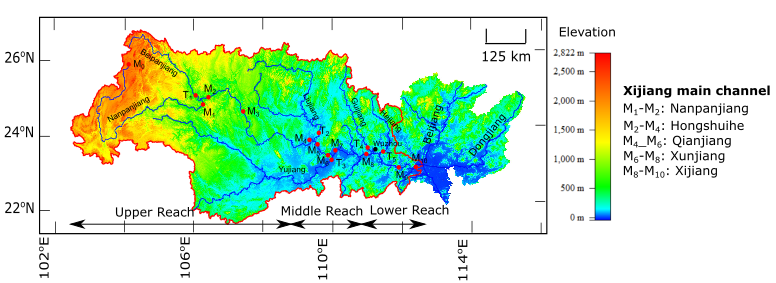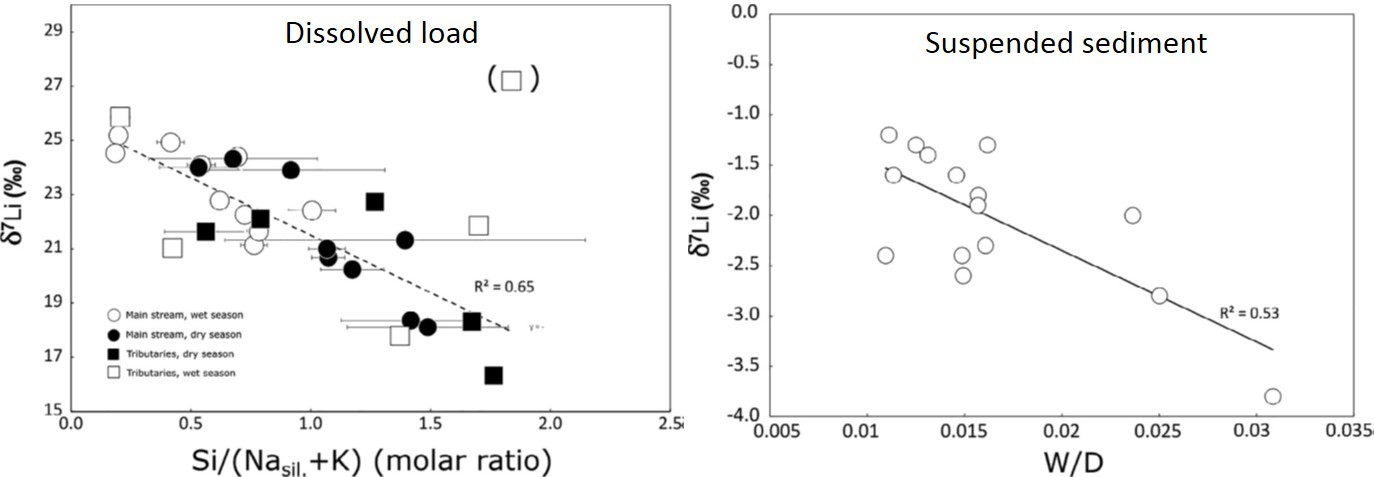Lithium (Li) isotopes signatures in sedimentary archives are promising proxies to reconstruct paleo-weathering rates and paleo-seawater composition. Nonetheless, the interpretation of the seawater Li isotope composition evolution over the Cenozoic is still debated. In this aim, the study of large rivers can provide constraints for continental weathering flux to the ocean. However, in the recent past, human activities like flow regulation via reservoir construction, have significantly modified the hydrodynamic of riverine systems, impacting the transfer of matter from the continent to the ocean. Hence, these effects need to be considered and investigated when unravelling the signature of natural processes from river borne materials.
In this study, we focus on the Xijiang river, the largest tributary of the Pearl River which is one of the largest Chinese rivers, characterized by intense weathering and as well as by an upsurge in dam construction since the 1980s–1990s. We report Li concentrations and isotopic compositions for both the dissolved and sediment loads of the Xijiang main stream and tributaries. We show that the variation of the dissolved δ7Li values across the basin reflect spatial shift in silicate weathering intensity, which we relate to the transition from an “intermediate” weathering regime characterized by high proportion of Li incorporated into secondary minerals to a more supply-limited regime characterized by a lower proportion of Li incorporated into secondary minerals. We also discuss the effects of large river management and regulation on sediment transport dynamics as well as their potential impact on the river geochemical fingerprints of basin scale weathering processes. In spite of the influence induced by river managements on the river sediments, our data also highlight that the imprint of weathering and erosion processes is still preserved in the sedimentary load of the Xijiang. Altogether, our study confirms the robustness of Li isotopes as a proxy of weathering and erosion processes, even in this heavily-managed river system.


These findings were entitled as “Deciphering the signatures of weathering and erosion processes and the effects of river management on Li isotopes in the subtropical Pearl River basin” and published in journal of Geochimica et Cosmochimica Acta. Corresponding author is Prof. Benjamin Chetelat from Tianjin University. This work was financially supported by the National Natural Science Foundation of China (NNSFC), grants 41561134017, U1612442, 41625012, the Agence Nationale de la Recherche (ANR), grant ANR-15-CE01-0012, and by Tianjin University for the visit of JB at ISESS, Tianjin University, grant T2018019.
Details:
Yilong Song, Xu (Yvon) Zhang, Julien Bouchez, Benjamin Chetelat, Jérôme Gaillardet, JiuBin Chen, Ting Zhang, Hongming Cai, Wei Yuan, Zhongwei Wang, 2021. Deciphering the signatures of weathering and erosion processes and the effects of river management on Li isotopes in the subtropical Pearl River basin: Geochimica et Cosmochimica Acta, v313, p340-358.
https://doi.org/10.1016/j.gca.2021.08.015.